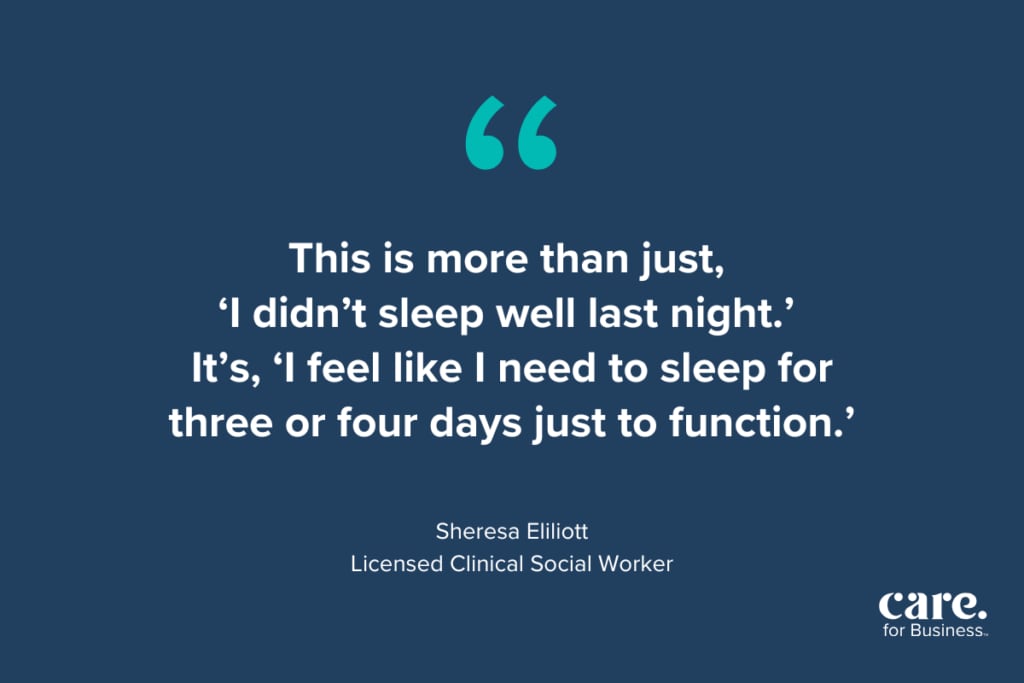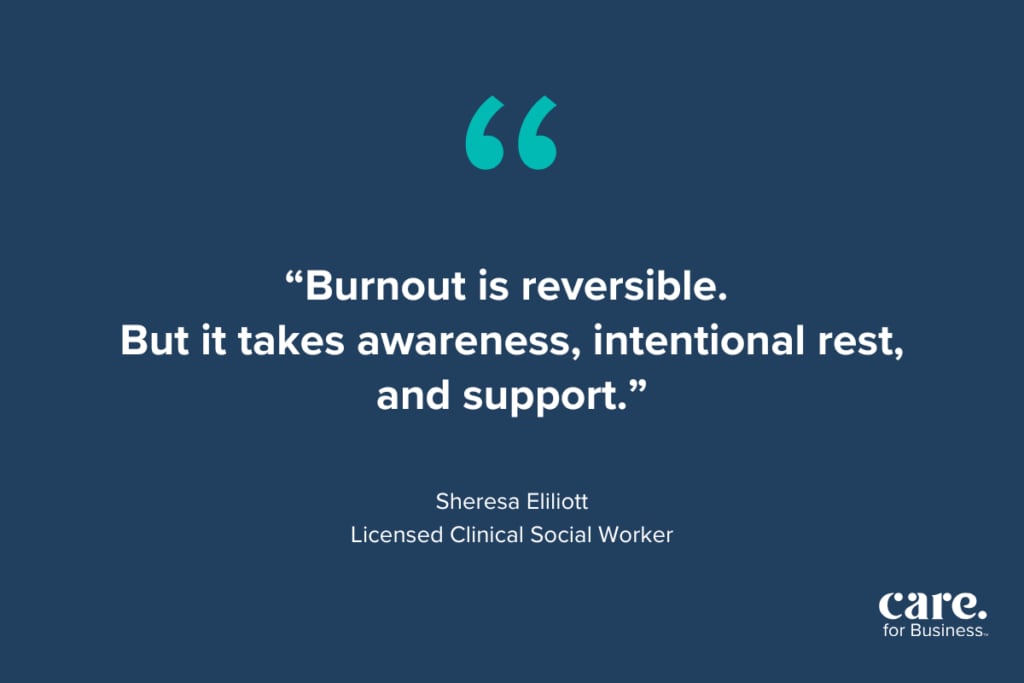Burnout doesn’t always announce itself loudly. More often, it creeps in quietly–through constant fatigue, irritability, or that nagging sense of never being caught up. In our recent Care Talk, Emotional Wellness: Overcoming Burnout, licensed clinical social worker Sheresa Elliott delivered a powerful session filled with personal reflection, professional insight, and practical strategies for overcoming burnout.
Whether you’re barely holding it together or simply feeling “off,” this conversation offers a validating and compassionate perspective on what burnout really looks like … and how to begin recovering from it.
Understanding the difference: burnout vs. depression
One of the first distinctions Sheresa made is one many people don’t realize: burnout is not the same as depression.
While both can feel overwhelming, burnout is often tied to chronic workplace stress, unrealistic expectations, and emotional exhaustion. Unlike depression, it can often be reversed with targeted changes–if we catch the signs early enough.

Sheresa helped viewers reflect on where they might fall on the burnout scale, encouraging self-awareness and honest check-ins.
Her reminder? If you’re consistently depleted, snappy, or disengaged, you’re not just tired. You may be burnt out.
What burnout looks like & why it’s hard to spot
Throughout the talk, Sheresa shared both personal stories and examples from her work with nurses, veterans, and other professionals. Burnout, she emphasized, doesn’t always look dramatic.
Sometimes it’s zoning out in meetings, missing emails, or dreading the start of every workday. It can show up as perfectionism, people-pleasing, or chronic pain. And often, we mistake it for just being “in a funk.”
She also explained how burnout can ripple into every area of life–from strained family relationships to declining physical health–and why recognizing it in our coworkers, friends, and ourselves matters more than ever.
Finding balance again
Included in the talk are some great strategies to overcome burnout. Sheresa shared small, attainable ways to begin healing, starting with identifying your root cause and setting realistic goals. From creating better work-life boundaries to understanding your stress triggers, she offered a roadmap for moving forward.
One simple but powerful takeaway: give yourself permission to do nothing. A day without errands, emails, or to-do lists might be the reset your body and mind are asking for.

Watch the full session
This Care Talk is deeply relevant as we release our latest Future of Benefits Report, which dives into the data behind burnout–particularly for people balancing care at home and responsibilities at work–and what employers can do about it.
The insights shared by Sheresa add powerful context to the numbers and trends that the report has uncovered: 69% of employees report moderate to high levels of burnout.
Watch the recap of the Care Talk, Emotional Wellness: Overcoming Burnout
About the presenter, Sheresa Elliott
Sheresa began her career in Social Work in 2011 with the Department of Social Services. She worked as a case manager for the Work First program supporting parents in seeking employment opportunities. Sheresa then served as a Foster Care Licensing Social Worker and Foster Care Social Worker for Youth 18-21. Sheresa served almost 10 years total on the local Department Level before beginning clinical work. Sheresa worked as a Mental Health Clinician in the Child First program providing Child-Parent Psychotherapy to children and their parents who have experienced trauma. Sheresa currently works in Private Practice as a Licensed Clinical Social Worker providing mental health therapy to individuals seeking support to address anxiety, depression and other mental health related disorders. You can find more about her work here.




